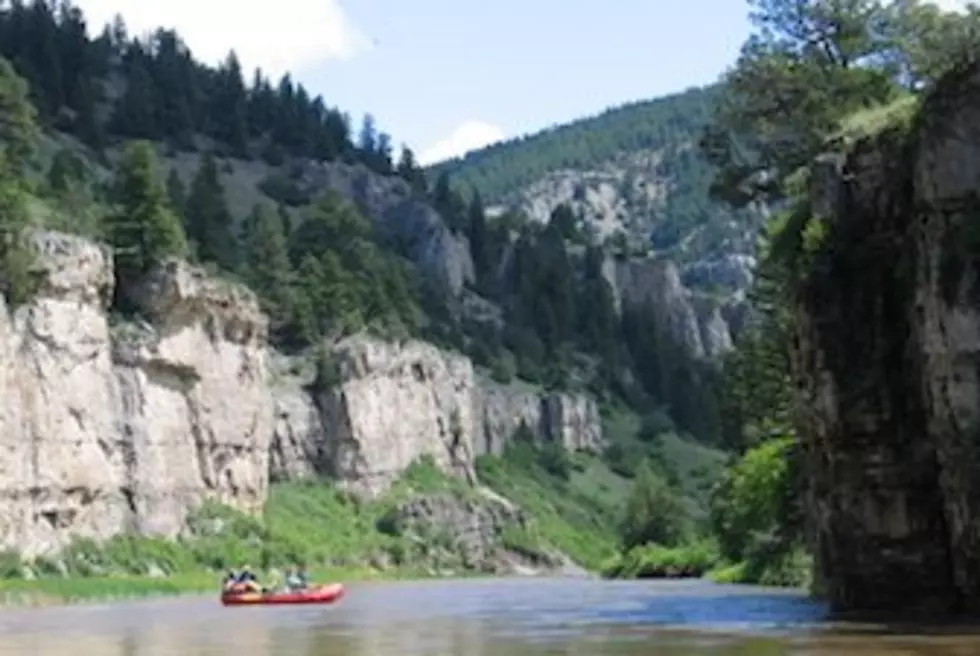
Judge: DEQ broke laws when issuing permit to Smith River mine
Fishing and conservation groups celebrated upon learning a judge ruled that the state of Montana broke its own laws when it issued a permit to a mine that poses risks to the waters of the Smith River.
On Friday, Richland County district judge Katherine Bidegaray ruled that the Montana Department of Environmental Quality shouldn’t have issued a mining permit to Sandfire Resources America subsidiary Tintina Montana for its Black Butte Project, because the department hadn’t done a thorough analysis of the copper mine’s threats to water quality in nearby Sheep Creek, a significant tributary of the Smith River northwest of White Sulphur Springs.
While that violated the state Metal Mine Reclamation Act, the DEQ also violated the Montana Environmental Policy Act by ignoring some of the 12,000 public comments that proposed alternative processes to deal with mine tailings to avoid environmental harm to Sheep Creek.
“The mine would generate millions of tons of toxic tailings and require the discharge of nitrogen-laden wastewater into Sheep Creek,” Bidegaray wrote. “This Court finds that DEQ’s decision to permit the Black Butte Copper Mine was arbitrary, capricious, and unlawful.”
In June 2020, five organizations sued DEQ in Meagher County District Court – the Black Butte Project is in Meagher County - after the department issued its decision two months earlier to grant Tintina Montana a permit to build an underground copper mine. The coalition includes the Montana Environmental Information Center, Earthworks, American Rivers, Trout Unlimited and Montana Trout Unlimited.
Once operational, the Black Butte Project would produce almost 13 million tons of toxic metals - including nickel, thallium, strontium, copper, lead, arsenic, and uranium - and mine waste that would leak sulfuric acid. Excavation of the mine would require the workers to pump out about 800 acre-feet of groundwater annually during its projected 19 years, which would deplete water in Sheep Creek and other Smith River tributaries.
That could further reduce water in the Smith River, which is already dropping so low in the summer that Fish, Wildlife & Parks has tried to make water rights calls for more water, and anglers and boaters who have coveted recreational permits to float the Smith River are stymied by late June.
Tintina Montana had proposed constructing a special 72-acre tailings facility to hold the toxic waste. But the coalition said it would be too dangerous, because the facility is “novel and untested.” The judge ruled that DEQ did no analysis of the damage that could result if the facility did fail.
The judge also agreed that DEQ also didn’t analyze how nitrogen in wastewater discharged into Sheep Creek could worsen devastating algal blooms that rob trout and other aquatic life of oxygen and habitat. Algal blooms are already increasing in Montana’s rivers as streams warm and the increasing human population brings in more sources of nitrogen. Since 2015, the Smith River has suffered from algae mats covering the river bottom. DEQ is currently struggling to develop qualitative water quality standards to ensure streams don’t suffer from too much nitrogen and phosphorus pollution.
During DEQ’s public comment period on the Black Butte Project, several people proposed ways to improve the tailings facility and reduce the risk of failure. But DEQ ignored them.
“DEQ dismissed these alternatives from in-depth consideration because, according to DEQ, they would provide no net environmental benefit compared to the proposed action and were allegedly infeasible,” Bidegaray wrote. “DEQ’s conclusions are unsupported by the record, and DEQ’s failure to rationally consider these reasonable alternatives to the proposed project thus violated (the Montana Environmental Policy Act.)”
Bonnie Gestring, Earthworks Northwest Program Director, said DEQ has 45 days to respond with suggestions to remedy its failings. She suspects they may appeal the ruling.
“Too many mines in Montana have unnecessarily polluted our rivers and streams. We can’t let that happen to the headwaters of the Smith River. The court’s ruling echoes our grave concerns about the potential harm from the proposed mine,” Gestring said.
It’s not the first time some of the groups have sued DEQ over permitting the Black Butte Project. In March 2014, MEIC and Earthworks sued DEQ when it approved Tintina's application to expand from surface mining to tunneling a mile underground. Even back then, they wanted DEQ to complete a more rigorous analysis of the threats to groundwater supplies and water quality along Sheep Creek.
“The facts of this case have been clear to us for the better part of a decade. We are glad to see that this court agreed that the Black Butte Copper Mine threatens to pollute and dewater some of the most important clean water sources of the Smith River,” said David Brooks, Montana Trout Unlimited executive director. “This is a win for trout, clean water, sacred Native American lands, and Smith River lovers for generations to come.”
Contact reporter Laura Lundquist at lundquist@missoulacurrent.com.
